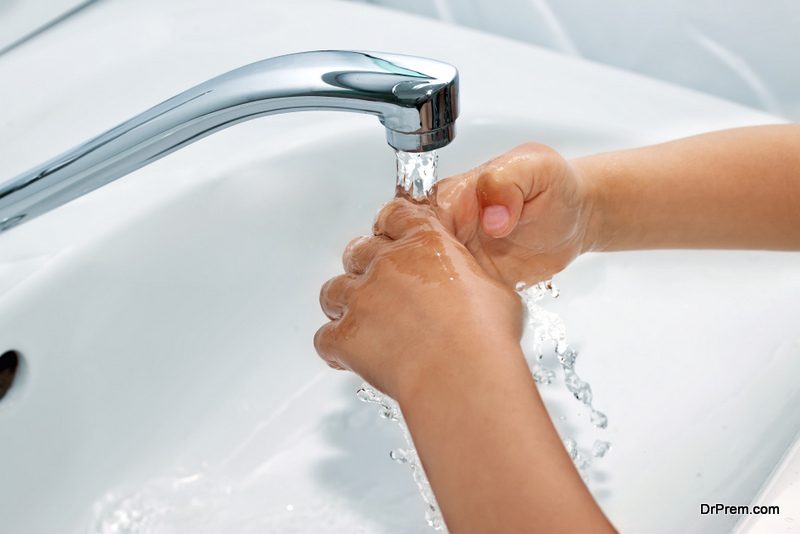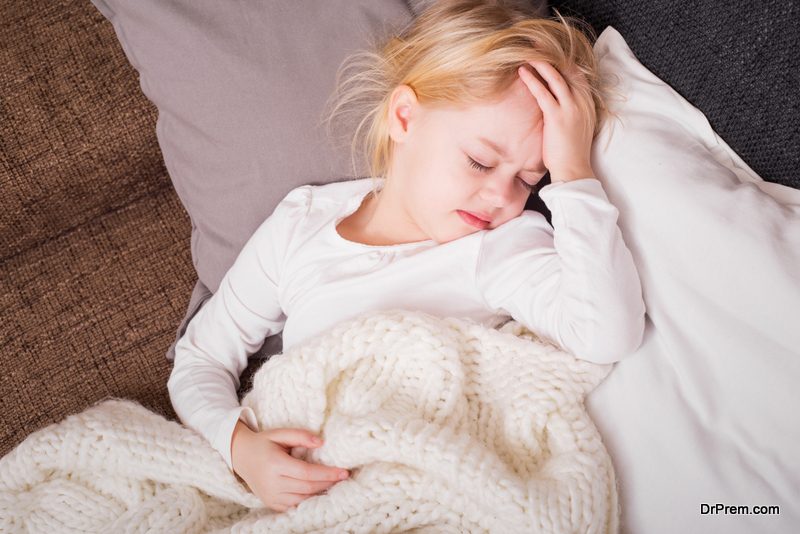It can be difficult to keep kids healthy once they’re enrolled in childcare or a public school setting? Why? With so many germs and bacteria flying around, children are susceptible to many illnesses. Another factor is that little ones are still learning the basics of personal hygiene and without it, germs spread more easily.
So what can adults do to help promote student health and protect both themselves and other kids from the spread of germs? Let’s take a look.
Why Schools are Breeding Grounds for Germs
Before we discuss how to protect against unwanted germs and sickness, let’s quickly discuss why germs spread so easily in school settings.
One reason why children are more susceptible to infection and sickness is due to their immature immune systems. The immune system is your body’s defense against illness. Children’s systems are not fully developed until around the age of five.
Not only are kids exposed to outside elements without a fully developed defense, but there’s no way of preventing the close proximity with which kids play in school and daycare. Because children are so close to one another, germs are easily transmitted. Not to mention, small children don’t have the best hygiene habits and tend to stick their fingers in places they don’t belong, like their noses and mouths. Once they do this, they often touch other things and people without washing the bacteria from their hands. All of these factors lead to the spread of germs in the school setting.
How to Prevent It
Now that we’ve identified the “why” of germs spread among kids, let’s discuss how you can cut down on this epidemic.
Proper Handwashing
 This is the most basic hygiene procedure, but because of that, it’s sometimes the one that is most overlooked. Handwashing is the first step in the defense against germs. Proper hand washing includes wetting your hands first, then applying soap, creating a sufficient amount of lather, covering all areas of your hands, fingers and wrists before rinsing. You should always use a paper towel to turn off the faucet and open the bathroom door, if possible. This prevents germs from returning to your clean hands.
This is the most basic hygiene procedure, but because of that, it’s sometimes the one that is most overlooked. Handwashing is the first step in the defense against germs. Proper hand washing includes wetting your hands first, then applying soap, creating a sufficient amount of lather, covering all areas of your hands, fingers and wrists before rinsing. You should always use a paper towel to turn off the faucet and open the bathroom door, if possible. This prevents germs from returning to your clean hands.
As far as duration goes, you should wash your hands for approximately 20-30 seconds. Some people keep track by singing the ABC’s or the song Row Row Row Your Boat. Whatever your method is, be sure to work up a good lather and cover all surfaces.
The “when” of hand washing is subject to debate, but it most definitely means after using the bathroom and before eating. Children are encouraged to wash any time they blow their nose, place their hands in their mouths, touch unsanitary surfaces or play with messy materials such as Play Doh, sand, or dirt. Hand sanitizer is a viable alternative when hand washing is unavailable.
Lead by Example
Have you ever heard the saying, “Do as I say, not as I do?” This means that in order for a child to follow suit with what you’re saying, you really should lead by example. Encourage children to sneeze into the crux of their elbow, a tissue or shirt. Anything is better than sneezing into the open air. If the child covers their mouth with their hand before sneezing, hand washing is in order! The same goes for coughing. Encourage children not to cough into the open air and to wash their hands after coughing into them.
Other proper hygiene etiquette is to use a tissue, versus a sleeve or hand when wiping your nose. You can also encourage hand washing at proper times by doing it yourself. This is especially true in a daycare setting where the sink is often in the same room. Wash your hands after coming in from outside and before eating.
Don’t Encourage Sharing
 Aren’t you supposed to encourage sharing among kids? Yes, but not when it comes to things like their pencils, crayons, lunches, or certain toys. When discussing school age children, offer each child their own set of supplies including pencils, markers, scissors, and glue sticks, when possible. This will help cut down on germs being spread from one infected child to a healthy child.
Aren’t you supposed to encourage sharing among kids? Yes, but not when it comes to things like their pencils, crayons, lunches, or certain toys. When discussing school age children, offer each child their own set of supplies including pencils, markers, scissors, and glue sticks, when possible. This will help cut down on germs being spread from one infected child to a healthy child.
The same is true during snack and lunch time. This may even be more important than not sharing school supplies. Not only are a child’s hands touching someone else’s belongings, but now they’re consuming those items. This is made worse by the fact that some children may take a bite of something and then hand the other half off to a friend. This means sharing saliva, which can lead to the spread of a long list of additional illnesses.
Infestations like lice are easily spread on children’s clothing, including jackets, hats, and backpacks. When discussing smaller children that put everything in their mouths, be sure to ask childcare providers how they minimize the spread of germs. Some options include bringing teethers from home, keeping the infant’s toys separate, or having a bin where all “mouthed” toys are placed and sanitized before being offered to the children again.
Immunizations
Not all parents believe in immunizing their child, but most childcare facilities require vaccinations, as well as public schools. The most common vaccinations are designed to fight against illnesses such as chicken pox, flu, Hepatitis A and B, and measles, mumps and rubella. All of these vaccines are received before the age of 5. Some parents opt out of these vaccinations by using a religious exemption. Check the rules and guidelines at your local school or daycare.
Immunizations are encouraged by most pediatricians as a form of preventive medicine. Immunizations introduce a certain type of illness to the body, in order to prepare the immune system for fighting it off. Though vaccinations introduce these illnesses into the body, they do so without any of the physical side effects or symptoms.
Stay Informed
 This means understanding what illnesses your child has recently been exposed to. If your child’s daycare has had a case of pink eye, Coxsackie, or any other highly contagious disease, you can take certain measures to keep your child safe.
This means understanding what illnesses your child has recently been exposed to. If your child’s daycare has had a case of pink eye, Coxsackie, or any other highly contagious disease, you can take certain measures to keep your child safe.
But nothing except routine and proper hygiene will help keep your child healthy on a regular basis. There is no magic answer or guarantee that will keep your child from getting sick. But the good news is, each illness helps to strengthen your child’s immune system and is a natural part of their development.
Article Submitted By Community Writer




